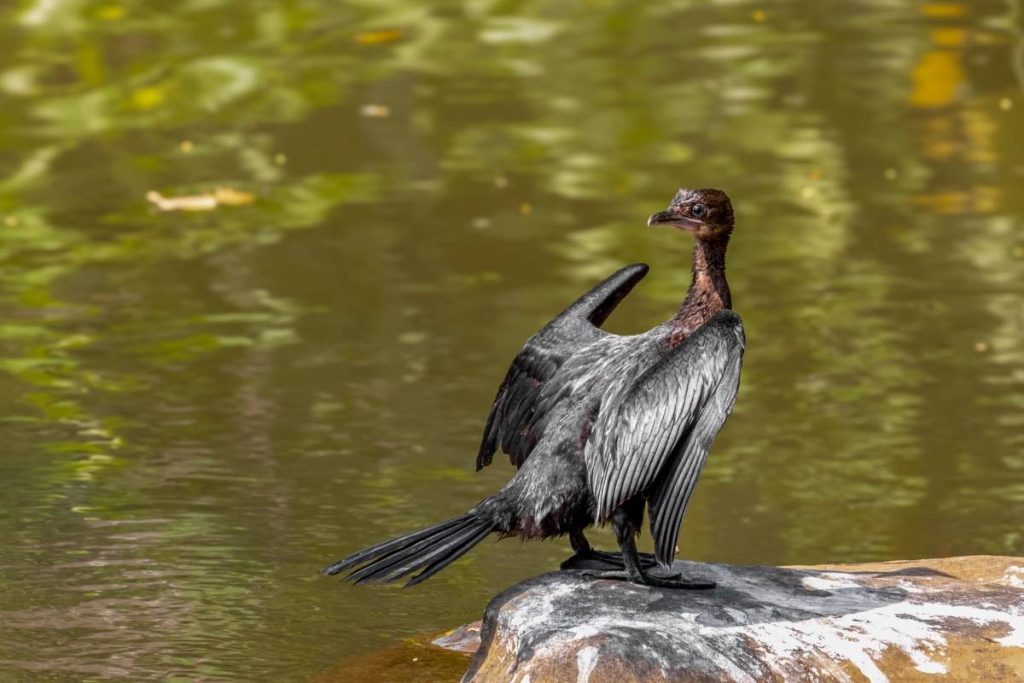Cormorants are medium-to-large aquatic birds with dark feathers, a hooked bill, and webbed feet. They dive for fish, nest on trees or cliffs, and are found worldwide, except in the central Pacific. They often dry their wings after fishing and feed their young by regurgitation.
The family Phalacrocoracidae contains about 40 species of aquatic birds commonly known as cormorants. Medium-to-large birds, cormorants weigh between 0.35 and 5 kilograms (0.77 and 11.02 lb) and have wingspans of 60 to 100 centimeters (24 and 39 in). Most species have feathers that are dark in color. It has a long, narrow, hooked bill.

Steady Observer The cormorant stands still, watching its surroundings.
There is webbing between each of their four toes. Furthermore, as fish-eaters, all species dive from the surface to catch their meal. In addition, some species of cormorants are excellent divers, having been observed diving as deep as 45 meters (150 feet) and using their wings to propel themselves underwater. Because they must travel efficiently underwater, they have relatively short wings, which makes them one of the most expensive birds to fly.

Smooth Touchdown The cormorant lands, breaking the water’s stillness.
On trees, or cliffs along the coast, cormorants build their nests. Some of these birds have settled in interior waters, but they are coastal rather than oceanic. It appears that a freshwater bird was the cormorants’ first ancestor.

Feather Perfection From the tree top, the bird grooms.
With the exception of the central Pacific islands, cormorants inhabit all parts of the planet. Moreover, all cormorants consume fish, including water snakes, fish, and small eels. After fishing, they often come ashore and, consequently, flap their wings in the sunlight to dry them.

Focused stare With keen eyes, the Cormorant looks sideways.
All cormorants have preen gland secretions, which they use to keep their feathers waterproof. Additionally, these secretions help maintain the bird’s overall feather condition. Some sources claim that cormorants’ feathers are impermeable, while others argue that their feathers are permeable to water. Some contend that although the outer plumage absorbs water, it prevents water from passing through the layer of air next to the skin.

Nature’s Beauty A cormorant surveys the calm waters.
The spread-wing stance helps with digestion, thermoregulation, balancing the bird, or signaling the presence of fish. As colonial nesters, cormorants use cliffs, trees, and rocky islets. Their eggs are chalky blue in color. Typically, they raise one brood annually. To nourish their offspring, parents regurgitate food.
Copyrights : All the photos and texts in this post are the copyright of John Thomas and Creative Hut Institute of Photography and Film. Their reproduction, full or part, is forbidden without the explicit approval of the right owners.


